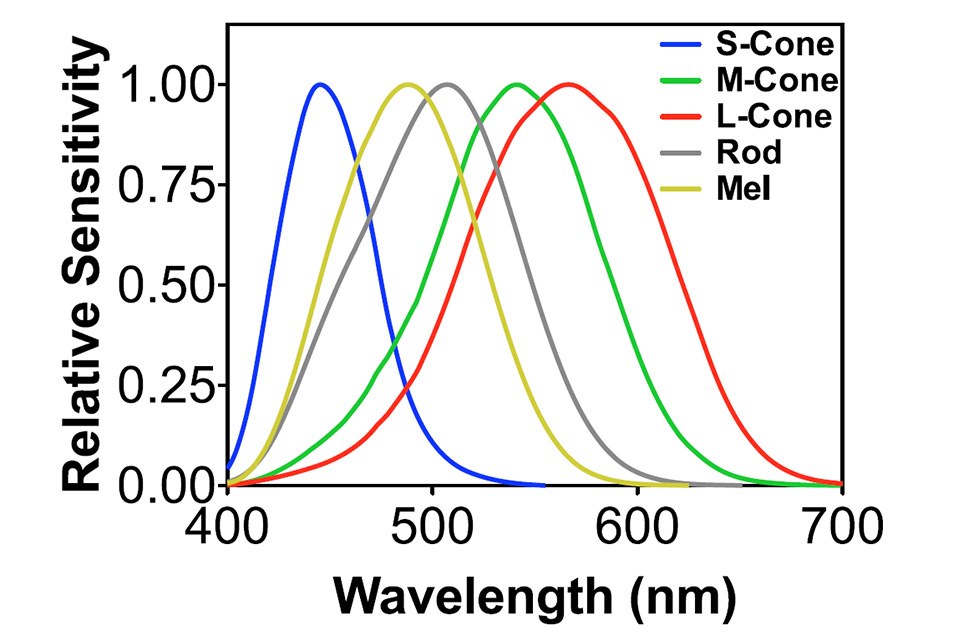Latest Research Publications in the Journal of Solid State Lighting
On December 24th and 29th, 2015, three new articles have been published in the SpringerOpen Journal of Solid State Lighting. The three articles are titled "Optical Role of Die Attach Adhesive for White LED Emitters: Light Output Enhancement without Chip-Level Reflectors", "The Importance of Intrinsically Photosensitive Retinal Ganglion Cells and Implications for Lighting Design", and "Towards Perceptual Accuracy in 3D Visualizations of Illuminated Indoor Environments".
Optical Role of Die Attach Adhesive for White LED Emitters: Light Output Enhancement without Chip-Level Reflectors
A thin optical reflector is often introduced to the backside of the standard mesa type light emitting diode (LED) chip with the aim to enhance its light output. However, most of the reported light output enhancements because of backside reflector (BR) introduction might not be relevant. This is because the reported measurement is often from a naked LED chip instead of a packaged LED emitter, and those based on the packaged emitters employing conventional silver based die attach adhesive (DAA). The actual role of BR, which is expected to be greatly influenced by the packaging materials and processes, is investigated for the monotonic blue color and white LED emitters using Monte-Carlo simulations. Contrary to prior reports, it is demonstrated for the first time that the role of BR can be diminished when the optically transparent DAA is used and other key packaging materials and processes are optimized, i.e., the light output for a packaged emitter with a BR-free chip can be as high as that of the packaged emitter using the same chip but with an added BR.
About Authors & Authors' contributions:
Gunwoo Kim (GK), Yu-Chou Shih (YCS), Jiun-Pyng You (JPY), and Frank G. Shi (FGS)
GK proposed the topic, established simulation models and carried out simulations.
YCS carried out experimental study and analyzed the results.
JPY analyzed the simulation and experimental results and helped in their interpretation.
FGS collaborated with the corresponding author in the construction of manuscript. All authors read and approved the final manuscript.
The Importance of Intrinsically Photosensitive Retinal Ganglion Cells and Implications for Lighting Design
The article is a summary of research results and gives a good overview on a topic with many still unanswered questions which is currently often discussed very controversially. The authors reviewed the role of melanopsin-containing intrinsically photosensitive retinal ganglion cells (ipRGCs) in light-dependent functions, including circadian rhythm that is important for health and visual perception. They finally discussed the implications for lighting design.
About Authors & Authors' contributions:
Dingcai Cao (DC), and Pablo A. Barrionuevo (PAB)
DC conducted literature search, graphic preparation and data analysis and wrote the manuscript.
PAB assisted in literature search, graphic preparation, data analysis and manuscript preparation.
Both authors read and approved the final manuscript.
Towards Perceptual Accuracy in 3D Visualizations of Illuminated Indoor Environments
Through a series of experiments, the authors have measured the extent to which 3D visualizations of a variety of lighting conditions in an indoor environment can accurately convey primary perceptual attributes. The goal was to build and rigorously test perceptually accurate visual simulation tooling, which can be valuable in the design, development, and control of complex digital solid-state lighting systems. The experiments included assessments of lighting-related perceptual attributes in a real-world environment and a variety of virtual presentations. Iteratively improving choices in modeling, light simulation, tonemapping, and display led to a robust and honest visualization pipeline that provides a perceptual match of the real world for most perceptual attributes and that is nearly equivalent in perceptual performance to photography. One persistently difficult attribute is scene brightness, as observers consistently overestimate the brightness of dimmed scenes in virtual presentations. In this paper the authors explain the experimental 3D visualization pipeline variables that were addressed, the perceptual attributes that were measured, and the statistical methods that were applied to evaluate the success.
About Authors & Authors' contributions:
Michael J. Murdoch (MM), Mariska G. M. Stokkermans (MS), and Marc Lambooij (ML)
MM led the project that included this research, [co-] designed all experimental variations, and drafted much of this paper.
MS co-designed and executed several experiments, performed the statistical analyses, and drafted the results section.
ML co-designed and executed one experiment and assisted with analyses and paper draft. All authors edited and approved the final manuscript.
Further Information and Downloads:
More information about the article and authors "Optical Role of Die Attach Adhesive for White LED Emitters: Light Output Enhancement without Chip-Level Reflectors" is available at the SpringerOpen Journal of Solid State Lighting website.
The article can also be directly downloaded.
More information about the article and authors "The Importance of Intrinsically Photosensitive Retinal Ganglion Cells and Implications for Lighting Design" is available at the SpringerOpen Journal of Solid State Lighting website.
The article can also be directly downloaded.
More information about the article and authors "Towards Perceptual Accuracy in 3D Visualizations of Illuminated Indoor Environments" is available at the SpringerOpen Journal of Solid State Lighting website.
The article can also be directly downloaded.

